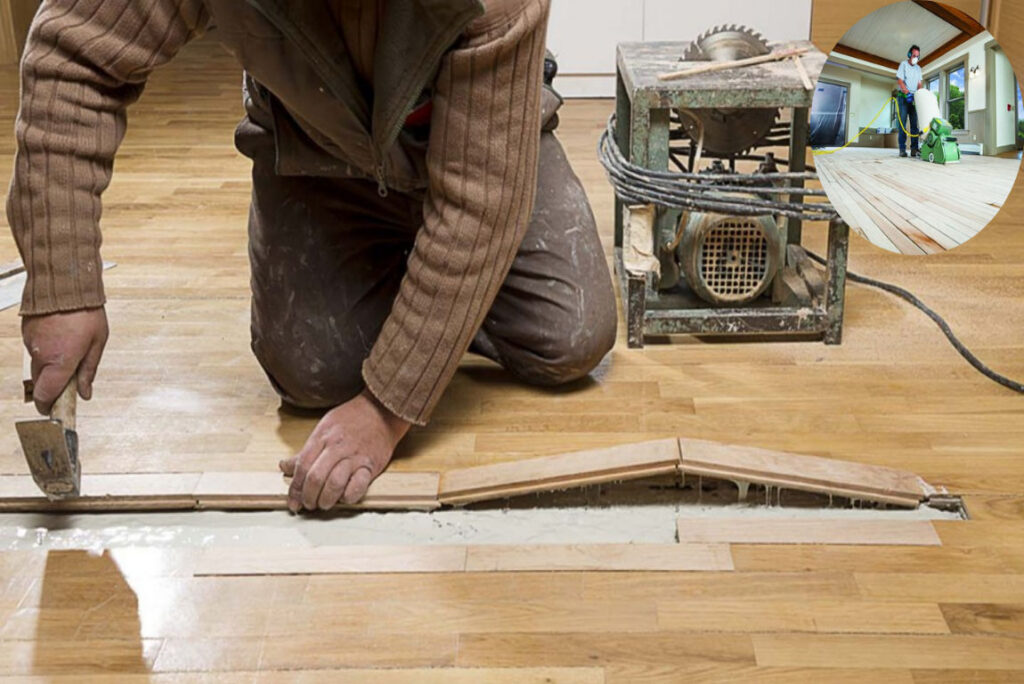Hardwood floors are a timeless choice that adds elegance, warmth, and character to any home. Their natural beauty and durability make them a popular flooring option; when properly cared for, they can last for decades. However, over time, even the most well-maintained hardwood floors can lose their luster due to scratches, wear, and exposure to the elements.
This is where hardwood home floor refinishing comes in—a cost-effective way to breathe new life into your floors without the need for a complete replacement. Refinishing restores the original beauty of your floors, extends their lifespan, and enhances the overall value of your home.
What Is Hardwood Home Floor Refinishing?
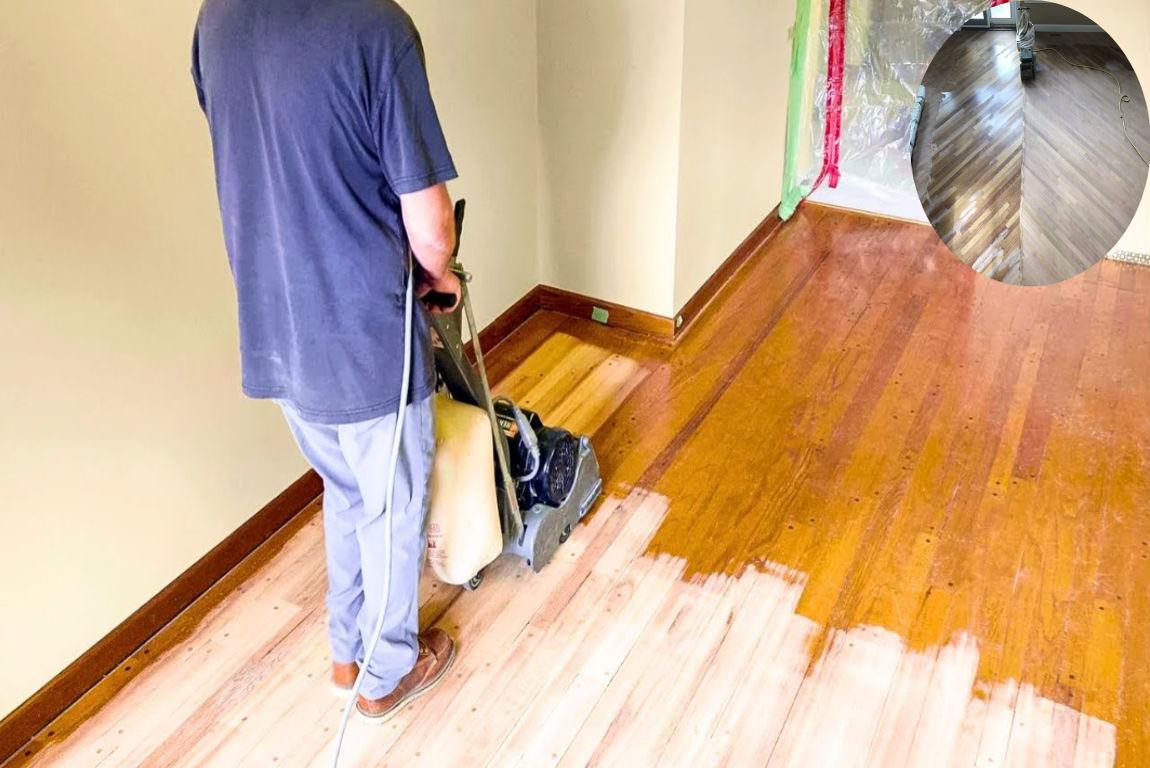
Hardwood home floor refinishing is the process of restoring the surface of your hardwood floors by sanding away the old finish, repairing minor damage, and applying a new stain or protective coating. This process improves the appearance of the floors while also protecting them from further wear and tear.
How Refinishing Differs from Resurfacing or Replacement
It’s important to distinguish refinishing from other flooring options:
- Refinishing focuses on the surface layer, addressing issues like scratches, dullness, and minor scuffs.
- Resurfacing involves replacing damaged planks and may include sanding, but it is a more intensive process.
- Replacement is a complete overhaul, where the entire flooring is removed and replaced with new material, typically reserved for floors with severe structural damage.
When Is Refinishing Appropriate?
Refinishing is a great choice for hardwood floors showing:
- Minor scratches or scuffs
- Fading due to sunlight or wear
- A dull or uneven finish
However, if your floors have deep cracks, water damage, or structural problems, resurfacing or replacement might be necessary.
Types of Hardwood Floors That Can Be Refinished
Not all hardwood floors can be refinished. Here’s a quick breakdown:
| Type of Hardwood Floor | Can It Be Refinished? |
| Solid Hardwood | Yes, multiple times due to its thick wear layer. |
| Engineered Hardwood | Yes, but only if it has a thick top veneer layer. |
| Laminate or Vinyl Plank Flooring | No, these cannot be sanded or refinished. |
Benefits of Hardwood Home Floor Refinishing
Refinishing your hardwood floors offers several advantages:
- Restores Original Beauty: Removes scratches and dullness, leaving floors looking brand new.
- Extends Lifespan: Protects the wood from further damage and wear.
- Increases Home Value: Well-maintained floors are a desirable feature for potential buyers.
- Eco-Friendly Alternative: Refinishing reuses existing materials, reducing waste.
Preparing for Hardwood Floor Refinishing
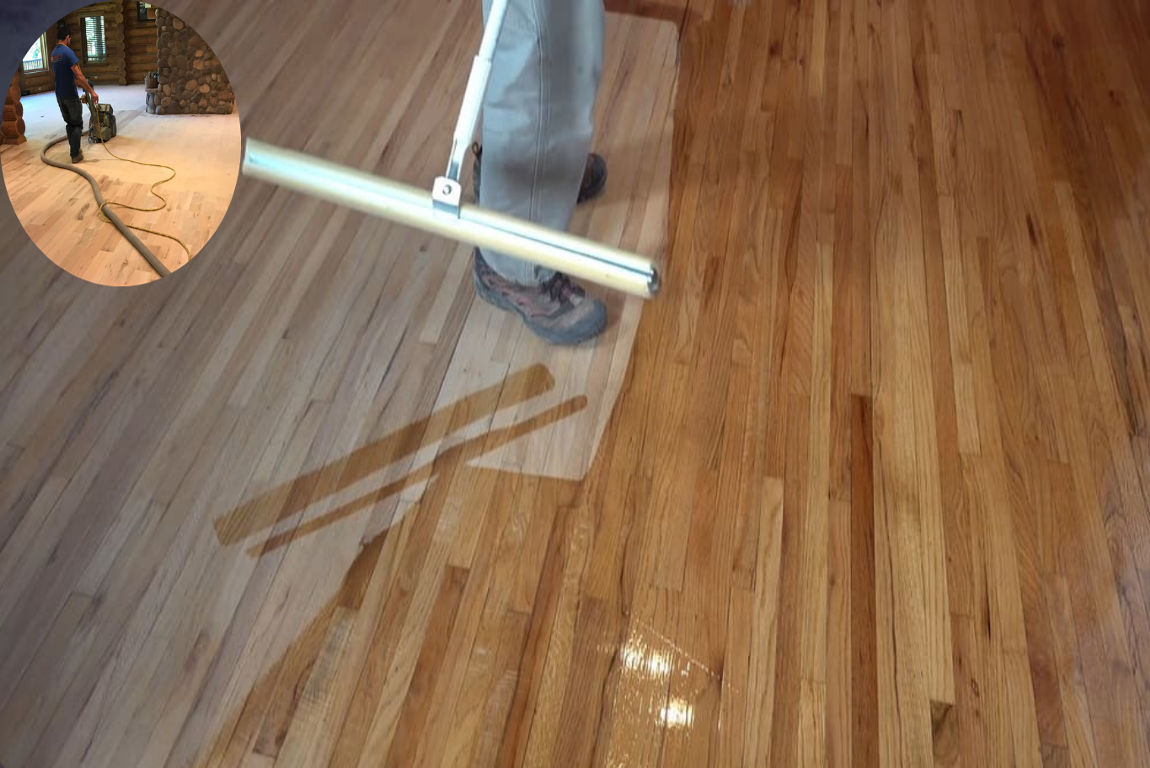
Preparation is a crucial step in the refinishing process. Proper preparation ensures a smooth finish and saves time in the long run.
Inspect Your Floors
Before starting, inspect your floors for:
You may also read (unlocking the secrets of top home real estate producers).
- Scratches and dents: Mark areas that need attention.
- Stains: Identify spots that may need extra sanding or treatment.
- Loose boards or nails: Secure them to prevent uneven sanding.
Clean the Floors Thoroughly
A clean surface is essential for refinishing. Follow these steps:
- Remove dust and debris using a vacuum with a soft brush attachment.
- Mop the floors with a gentle wood floor cleaner to remove any residue.
Repair Minor Damages
- Fill small cracks or holes with wood filler that matches your floor’s color.
- Sand down raised areas or uneven spots for a level surface.
Protect Surrounding Areas
Refinishing can be messy, so protect your home by:
- Taping baseboards and covering vents to prevent dust from spreading.
- Removing furniture and rugs from the room.
Prioritize Safety Precautions
Refinishing involves dust and fumes, so ensure proper ventilation is in place. Wear a dust mask, safety goggles, and gloves to protect yourself during the process.
Step-by-Step Hardwood Home Floor Refinishing Process
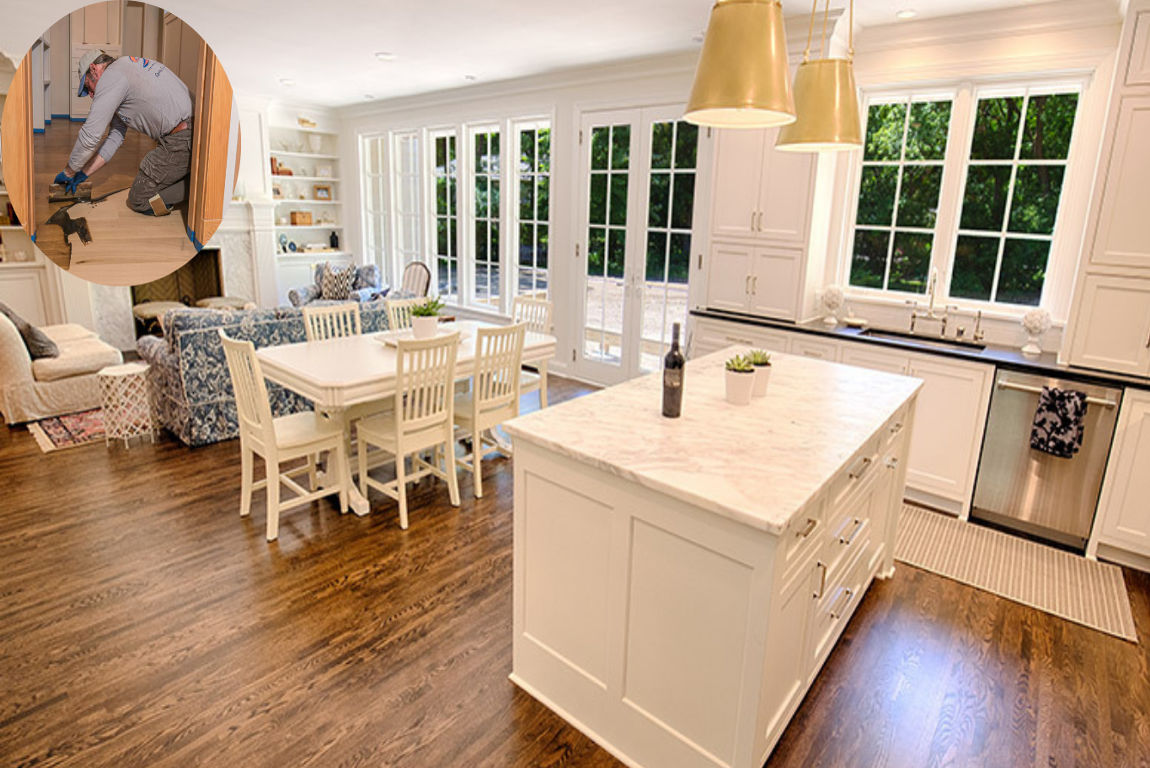
Refinishing hardwood floors involves several stages, each requiring care and precision.
Sanding the Floor
Sanding removes the old finish and smooths the surface.
- Purpose: Prepares the wood for staining or sealing.
- Tools: Use a drum sander for large areas, an edge sander for corners, and an orbital sander for fine details.
- Sandpaper Grit Progression: Start with coarse grit (60), move to medium grit (80), and finish with fine grit (120).
- Techniques: Sand with the grain of the wood to avoid swirl marks.
Buffing
Buffing smooths out minor scratches left by sanding and prepares the surface for finishing.
- Use an industrial buffer or a pole sander with a fine-grit sanding screen.
You may also read (unlocking gla the key to commercial home real estate).
Cleaning After Sanding
After sanding and buffing, thoroughly clean the floors:
- Vacuum to remove dust.
- Use a tack cloth to collect fine particles.
Applying Stain (Optional)
Staining adds color to your floors, enhancing their aesthetic appeal.
- Choosing a Stain: Pick a shade that complements your home’s decor.
- Application: Apply evenly with a brush or rag, working in small sections.
Sealing and Finishing
The finish protects your floors from wear and tear.
- Types of Finishes:
- Oil-based polyurethane: Durable, rich finish.
- Water-based polyurethane: Eco-friendly, quick-drying.
- Wax or oil: Offers a natural look.
- Application: Use a brush or roller to apply thin, even coats. Allow drying time between coats (usually 24 hours).
Final Inspection and Cleanup
Inspect the floors for any imperfections and apply touch-ups if needed. Ensure proper ventilation during the drying process.
DIY vs. Professional Hardwood Floor Refinishing
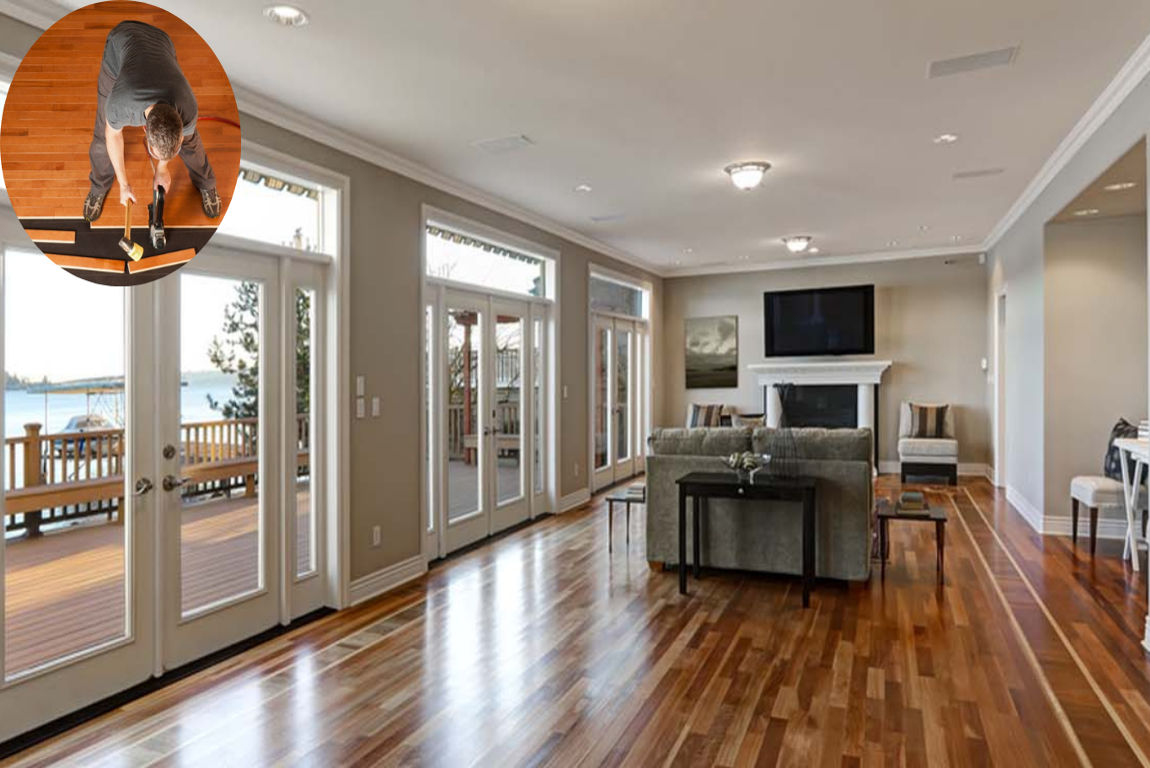
DIY Hardwood Floor Refinishing
Pros:
- Cost-effective.
- Satisfaction with completing a home improvement project.
Cons:
- Requires specialized tools and skills.
- Time-consuming and physically demanding.
Professional Refinishing
Pros:
- Guarantees high-quality results.
- Suitable for large areas or heavily damaged floors.
Cons:
- Higher cost.
Cost Comparison
OptionAverage Cost
DIY Refinishing $200–$500 (tools + materials)
Professional Refinishing $3–$8 per square foot
Maintenance Tips to Prolong Hardwood Floor Finish
Proper maintenance helps to delay the need for refinishing.
Daily and Weekly Cleaning
- Sweep or vacuum regularly with a soft brush attachment.
- Mop with a damp cloth and a pH-neutral wood floor cleaner.
Preventing Damage
- Use mats or rugs in high-traffic areas.
- Add felt pads to furniture legs to avoid scratches.
Periodic Maintenance
- Buff or recoat the floors every few years to maintain their shine and appearance.
Common Mistakes to Avoid
Avoid these common pitfalls for a flawless refinishing job:
- Skipping sanding or cleaning steps.
- Using the wrong grit sandpaper.
- Applying finish in dusty or humid conditions.
You may also read (step by step guide to home automation ideas).
